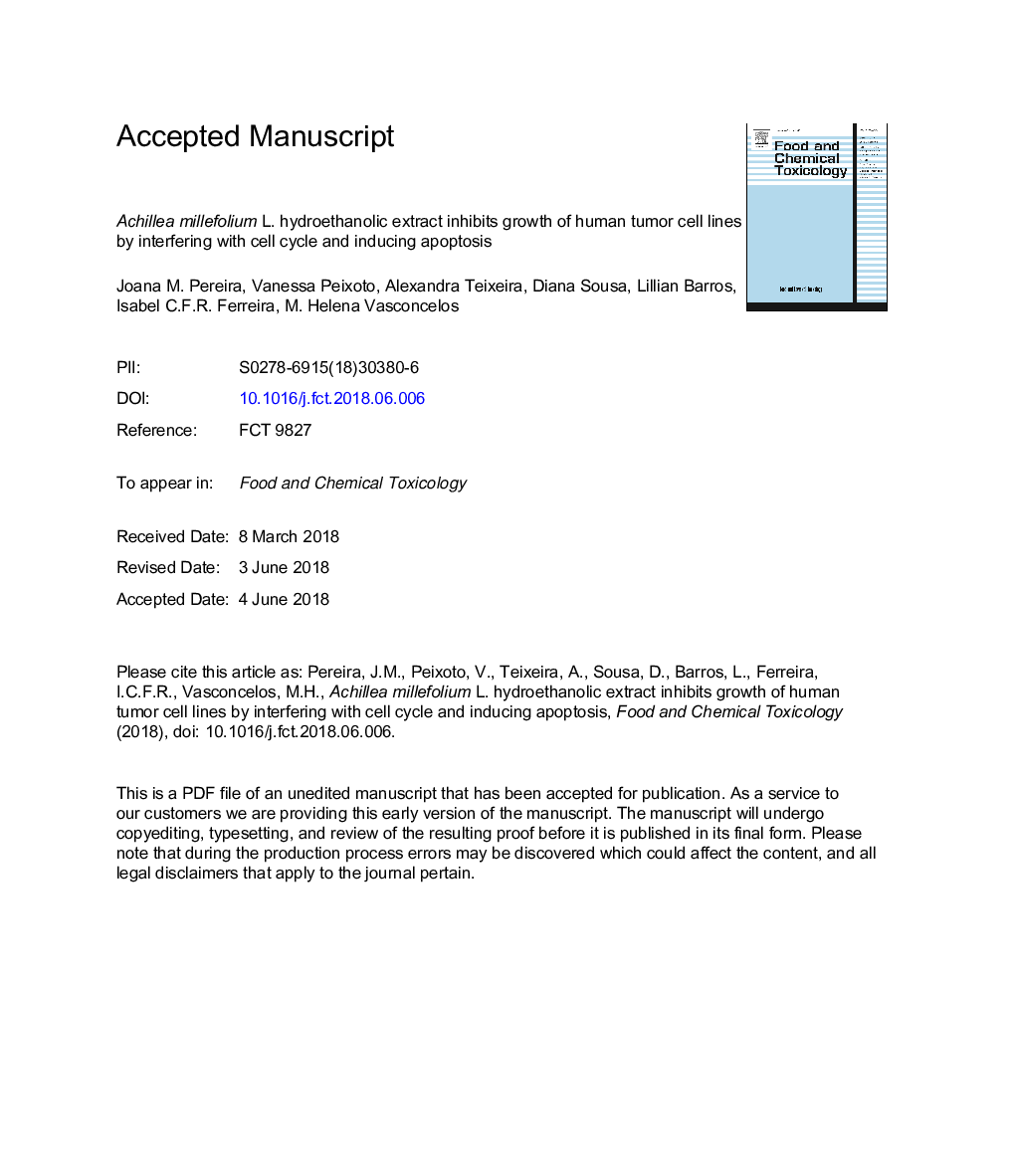| Article ID | Journal | Published Year | Pages | File Type |
|---|---|---|---|---|
| 8547116 | Food and Chemical Toxicology | 2018 | 28 Pages |
Abstract
The cell growth inhibitory activity of the hydroethanolic extract of Achillea millefolium was studied in human tumor cell lines (NCI-H460 and HCT-15) and its mechanism of action was investigated. The GI50 concentration was determined with the sulforhodamine B assay and cell cycle and apoptosis were analyzed by flow cytometry following incubation with PI or Annexin V FITC/PI, respectively. The expression levels of proteins involved in cell cycle and apoptosis were analyzed by Western blot. The extracts were characterized regarding their phenolic composition by LC-DAD-ESI/MS. 3,5-O-Dicaffeoylquinic acid, followed by 5-O-caffeoylquinic acid, were the main phenolic acids, while, luteolin-O-acetylhexoside and apigenin-O-acetylhexoside were the main flavonoids. This extract decreased the growth of the tested cell lines, being more potent in HCT-15 and then in NCI-H460â¯cells. Two different concentrations of the extract (75 and 100 μg/mL) caused alterations in cell cycle profile and increased apoptosis levels in HCT-15 and NCI-H460â¯cells. Moreover, the extract caused an increase in p53 and p21 expression in NCI-H460â¯cells (which have wt p53), and reduced XIAP levels in HCT-15â¯cells (with mutant p53). This work enhances the importance of A. millefolium as source of bioactive phenolic compounds, particularly of XIAP inhibitors.
Keywords
Related Topics
Life Sciences
Agricultural and Biological Sciences
Food Science
Authors
Joana M. Pereira, Vanessa Peixoto, Alexandra Teixeira, Diana Sousa, Lillian Barros, Isabel C.F.R. Ferreira, M. Helena Vasconcelos,
